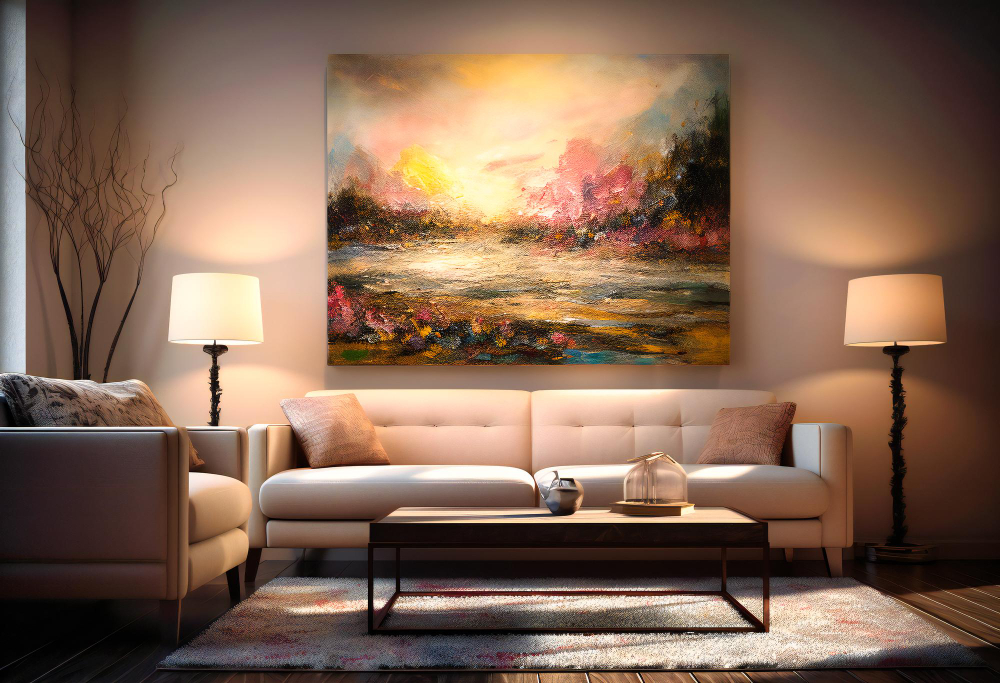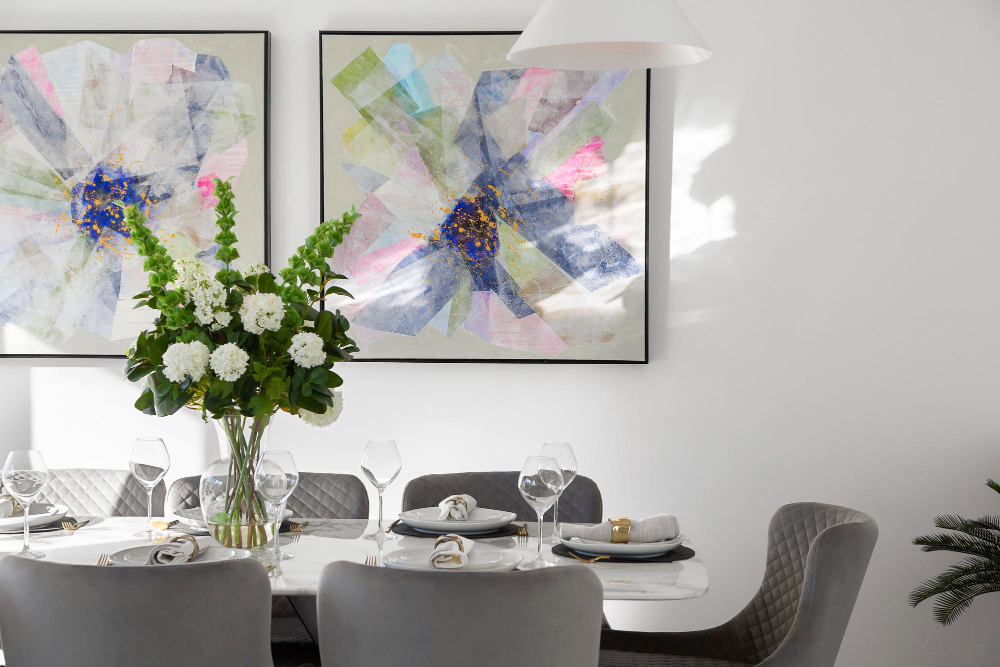Last updated on
Integrating visual art into your home decor can vastly enhance the ambiance and character of your living space. Among the various mediums used, paintings stand out as timeless and personal expressions of style, taste, and identity.
While it can be an enriching experience to select and display artwork, there are subtle practices that can elevate the impact of these pieces. In this post, we’ll explore six practical tips for incorporating paintings into your home interiors, ensuring they become not just features on a wall, but part of a harmonious visual narrative within your domicile.
Speak with Painting Experts

Before even starting the process of choosing a painting, dialogue with painting professionals can open up a world of knowledge and insights. As mentioned at paintzonellc.com, professionals understand the significance of revitalizing your home space.
From color harmonies to the psychological effects of certain artistic styles, their expertise can guide you toward selections that resonate and coexist with your existing interiors. A muralist could transform a plain wall into a unique focal point, while traditional painters might offer advice on the type of art that complements the lighting and room size.
Engaging in these conversations will set a strong foundation for the artistic enhancements to come.
Consider the Scale and Space
The impact of a painting can be greatly affected by how it fits within its environment. A large, grand painting in a small room may overwhelm the space, while a small, intricate piece on a vast wall might lose its significance. To ensure a balanced look, take note of the scale and dimensions of your rooms.
Large, open areas lend themselves to bold, sizable artworks that command attention and fill the space effectively. In contrast, if your space is more confined or cluttered, a collection of smaller paintings may add interest without creating a crowded feel. Balance and harmony are crucial elements that visual art can contribute to your interior design.
Lighting for Effect

Lighting is a critical but often overlooked factor when it comes to displaying artwork. The right lighting not only illuminates the piece for viewing but can also be used to create powerful effects, emphasizing the color, texture, and tonality of a painting.
Natural light is considered the gold standard for art display, as it changes subtly throughout the day and can dynamically showcase the artwork. For pieces not in direct sunlight, consider adjustable, high-quality LED lighting that can be positioned to direct light precisely where it’s needed without damaging the artwork with UV rays.
Art as a Focal Point
A well-chosen painting can serve as the anchor for an entire room’s design concept. By creating a visual focal point, an artwork draws the eye and sets the tone for the surrounding decor. Consider the message and mood that the artwork conveys and make it central to the arrangement in the room.
Surround it with complementary decor and minimalist furnishings to emphasize its importance, or use contrasting elements to create a more daring, avant-garde space. When used correctly, the painting can become the life and story of that particular space.
The Power of Groupings
While a single painting can be striking, a grouping or gallery wall has the power to tell a richer, more complex story. This technique is especially useful if you have multiple pieces that you’d like to display, or if you wish to create a more layered, textured look in your interiors.
Groupings can be structured around a common theme, palette, or style, and the arrangement itself can become a piece of art. Use measurements and spacing guides to ensure a coherent look, and don’t be afraid to mix and match frames and sizes for added interest.
The Art of Placement
Location is everything when it comes to the placement of your paintings. In high-traffic areas, it’s best to display art at eye level, where it can be most fully appreciated without the need to stop and stare. In passageways or staircases, consider the trajectory and angle from which the art will be most frequently viewed.
For bedrooms or more intimate spaces, placement above furniture or on walls that draw one’s gaze can create a more inviting atmosphere. And remember, art doesn’t have to be confined to walls – leaning paintings against bookcases or mantels can be an informal yet stylish way to showcase them.
Art is a personal expression and an investment in ambiance, so take your time and enjoy the process of incorporating paintings into your home interiors. By engaging with experts, evaluating scale and space, leveraging lighting, making art a centerpiece, utilizing groupings, and thoughtfully placing each piece, your home can become a gallery of your unique taste and style.
Each new painting brings the opportunity to refresh and renew, allowing your interiors to evolve and grow alongside your personal art collection.
Table of Contents




